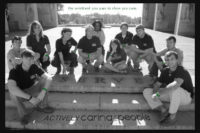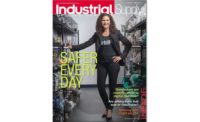What is the one issue in safety that everyone deals with daily?
 A recent conversation among members of the EHSQ Elite (Number One in Safety) LinkedIn discussion group:
A recent conversation among members of the EHSQ Elite (Number One in Safety) LinkedIn discussion group:
• “Apathy and lack of passion. Thinking that standards, rules, and regulations are for everyone else. I see safety as like balancing a see saw. On one end are risks and hazards, the other end is what you will do to mitigate hazards and risks to keep the see saw in balance.”
• “Complacency. It affects just about all industries and individuals, from blue to white collars. Everyone has preached safety. Once complacency kicks in, it's an accident waiting to happen if not properly weeded out. “
• “Others within a Project team not wanting meet a company’s standards or legislation in our state, or the person goes ahead and does it their way because they did not want to stop product. They become complacent or many times they feel safety is costing the project too much and therefore they can cut back on many of the areas that prevent people having the time to assess their risk. “
• “The answer is communications. In our operations, we have over 40 nationalities spread across all layers of our operations. These folks come from other corporate cultures and other national cultures, and their perceptions of ‘safety’ are built upon those experiences. More specifically, their attitudes towards, and acceptance of our safety culture is a concern.
“For us, the first objective is to bring them to a common understanding of our culture; our values, behaviors, social and psychological environment.
“The second objective is to gain their acceptance of our safety culture. We recognize that people fall into three categories: engaged, disengaged, and actively disengaged. Disengaged and actively disengaged employees behave as they do for many reasons. Our job is to listen and communicate. When we do it right, they become engaged. That is the one issue in safety that we deal with daily--communications. “
• “Safety somehow coming into conflict with productivity from the employee's viewpoint. “
• “I have seen it too often, where safety takes a backseat to accomplishing a task/mission and quite often there is not enough support from management /employers. Because this type of culture is in place, it makes the EHS compliance person powerless to do their job effectively. This brings resentment between the compliance personnel, employees and employer. In the end, this can be bad for business. “
• “That's easy... It's dealing with the fact that a lot of organizations care more about the safety department ensuring legislative compliance and protection from litigation rather than the primary focus being the actual safety of workers on site.
“Not all companies are like this admittedly, but there are a lot out there that care more about worker signatures on forms rather than task observation and mentoring.
“Not only is this ultimately detrimental to safety but it also reduces worker morale, fails to instill in OHS professionals the right attitudes to safety, does not encourage proactive measures or worker consultation and has the ability to tarnish the reputation of OHS professionals who have worked for such organizations.“
• “As a safety professional who has worked in MSHA and OSHA organizations, I have found there are some common factors in both areas that we all face.
- “Every day our employees are faced with conditions that can put them in an AT- RISK situation.
? Rushing – When you exceed the pace at which you normally perform a task. This could include: working, driving, walking/running, lifting, moving, etc. Any time an employee is rushing they are at risk.
? Frustration - Caused by relationships inside and outside the workplace, malfunctioning equipment, inadequate tools, conflicting objectives and pressures, etc. Any of these and hundreds of others can cause an employee to not have their mind on the task at hand.
? Fatigue – between work and home the employee is not getting enough rest or has problems getting enough sleep and comes to work fatigued, this can again cause the person to not have their mind on the task at hand
? Complacency – when an employee becomes familiar enough with the hazards to become considerably less concerned over time.
“As safety professionals we need to get everyone in our company from the TOP down to look for ways to overcome the conditions that puts someone in an AT- RISK SITUATION. Through training and coaching, we can help our employees recognize ways to reduce the at-risk behaviors that affect them on a daily basis. When we train and coach them on reducing the at-risk actions they take it is beneficial both at work and at home.”
• “Many of the above items are, in my humble opinion, the unfortunate byproduct of "leadership deficit." I am very pleased to work for an owner who understands that a quality safety effort is indeed a many faceted stone. There simply is no one size fits all answer: carrot - stick systems, accountability, behaviors, leading indicators - on and on. All the items above we all face day-to-day, however if the CEO, hence the organization, is a true leader s/he will provide the management team the structure, resources and backing to overcome these hurdles in a positive way and then hold the team to account - consistently across the board.
“When one small-minded unit leader is allowed to think s/he is gaining ground for the organization by subjugating safety to the temptation of short-term production gains, it is only the truly committed CEO who will point out the many pitfalls of that misguided effort. That effort actually will cost in the long run more than it saves. “
• “Deficits in the leadership of an organization have a HUGE impact on outcomes down the line. Guess what? The deficits don't only have to be about health & safety. So many companies fail because of other deficits in the leadership. What many of the so-called leaders don't understand is that good health & safety practices make good business sense. Increased productivity, less injuries (or worse), fewer direct costs of those injuries; and then the indirect costs that nobody seems to particularly care about, better morale, more TRUTH & TRUST (and the mutual respect that goes with that), less lives ruined and surprise-surprise, a better bottom line.
“From the top down and at all levels, there needs to be Responsibility, Authority and Accountability. Not just for production and similar business outcomes, but for health & safety. These outcomes can be measured as well and if incorporated in effective performance management systems can work to improve a lot of things.
“As for those "small-minded unit leaders" … managed properly, they will be discovered and when they are, a decision needs to be made about what value they add or cost the business, particularly in the long term.
“There are too many of these people with hidden agendas that don't necessarily reflect on the values and vision of the company, yet they just keep on doing the wrong thing. When the unthinkable happens is when they come unstuck. Sorry and sadly, too late!”
• “I would say apathy. No matter the management commitment, if individuals do not wear their PPE, observe warning signs, etc., they are making a conscious decision to place themselves in danger. I have seen employee correction, discipline, and management commitment but, apathy lead to accidents.
“I will not argue that in many instances it is a lack of support from leadership but,Ii have also seen management dedicated to safety and individual still get hurt due to the thought "I am only going to be there, be doing this, etc. for a moment so I should be fine"
• “Stress is one major safety problem I found that everyone faces on the daily basis at work, but nothing is done about. It is a killer! Does your company do anything about it?”
• “Unwillingness (not willing ) to become a role model in the field of your function is the most critical issue everyone is facing in day-to-day life. If you are able to prove yourself as a role model, your environment will be changed to your requirement. This is the most difficult task for any human.”
• “The one factor you have to deal with when it comes to safety is the human element. This variable is, and always will be, the factor you have no control over. People are not perfect and they are going to continue to make mistakes. “
• “We use the term ‘chronic unease’ as a daily moniker for our operational awareness. But as a company, the biggest exposure, without a doubt, is through the everyday driving of company vehicles.”
• “I agree it is the human factor, either in the form of negative attitude or indifference from employees and/or in the lack of leadership of those responsible for safety to instill the proper attitude. “
• “The issue I see is that EHS is still reactive rather than proactive. There is little buy-in on EHS being a part of the business that requires steps like all other production business entities, for example business process mapping. “
• People… It’s truly all about the emotional intelligent connection you have with your workers. We now have to be more contemporary leaders than traditional leaders. The entire demographic of employees will continue to change.”
• “Our society of fast-paced workers and productivity and the focus on getting product out the door (is the number one problem we deal with). I agree with all the comments above and note that while an emergency brings people back to reality, our society does not value a slow pace to ensure safety. There needs to be a ‘benefit’ that would outweigh the apathy to obtain commitment from the top, middle, and bottom of the work force. If safety became as much a mantra as productivity and profit, then you would see a paradigm change. But the big question is how do you affect this change? “
• “What I have seen are corporations that have safety professionals do the training, create a hype and have all the correct words, etc., then get on the job site and see that it was only talk -- having an unsafe environment in reality. To top that off, having those same professionals on site and yelling at everyone about not acting safely is a problem.”
• “When someone is driving a vehicle with a unsecured load, "I am not going far." When someone is performing a task without all PPE, "It with be just a second." When someone has tripped over the same item all day long, "It is not my stuff."
• “Housekeeping. It is a never-ending activity that nearly all of the comments impact in one way or another. Complacency, apathy, management support -- all impact this important task. And regardless of your occupation, it is ever-present, including your home life. All safety disciplines sooner or later have to deal with housekeeping or the impacts of poor housekeeping.”
Looking for a reprint of this article?
From high-res PDFs to custom plaques, order your copy today!







